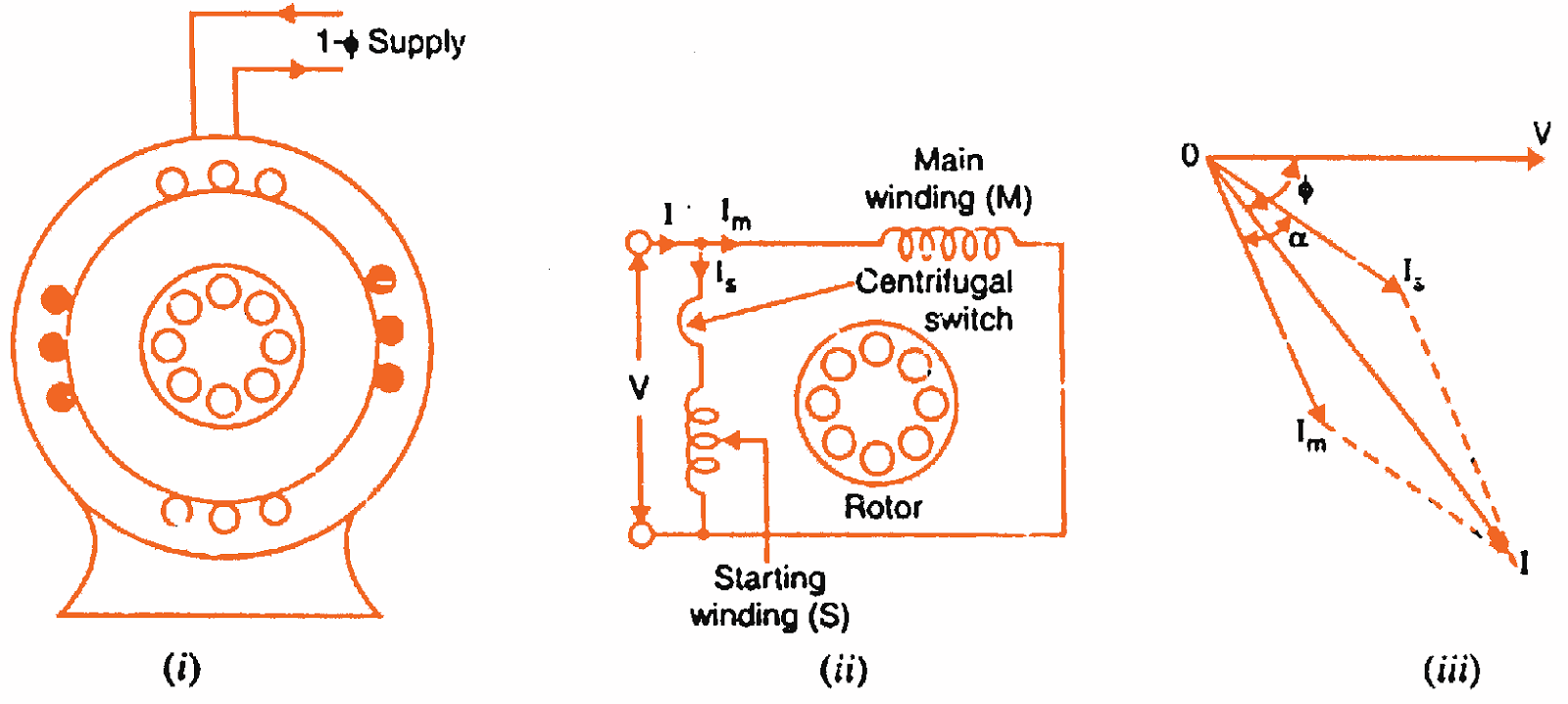Unlocking the Secrets of 3-Phase Induction Motor Phasor Diagrams
Ever wondered how engineers visualize the complex interplay of voltages and currents within a 3-phase induction motor? The answer lies in the power of phasor diagrams. These graphical tools provide a snapshot of the motor's electrical state, offering invaluable insights into its performance characteristics. Whether you're an electrical engineering student, a seasoned professional, or simply curious about motor operation, understanding these diagrams is key.
Imagine trying to grasp the dynamic relationship between fluctuating voltages and currents in a rotating machine. It's a complex scenario. Phasor diagrams simplify this complexity by representing these sinusoidal quantities as vectors, allowing us to visualize their magnitude and phase relationship at a specific point in time. This visual representation is fundamental to analyzing and optimizing motor performance.
The concept of representing AC quantities with phasors emerged from the need to simplify AC circuit analysis. Early electrical engineers realized that using vector representation could make complex calculations involving sinusoidal functions more manageable. This led to the development of phasor diagrams, which are now indispensable for understanding the behavior of AC machines, including 3-phase induction motors.
Phasor diagrams for 3-phase induction motors are crucial for several reasons. They illustrate the relationship between stator and rotor magnetic fields, help determine the motor's power factor, and are instrumental in analyzing the effects of load changes on motor performance. Without these diagrams, understanding these complex interactions would be significantly more challenging.
A key issue associated with phasor diagrams is the potential for misinterpretation if the underlying concepts of AC circuit analysis are not well understood. It's crucial to remember that these diagrams represent a snapshot in time and that the actual voltages and currents are continuously changing. A solid grasp of phasor representation is essential for accurate analysis.
A phasor diagram for a 3-phase induction motor typically shows the stator voltage, stator current, rotor current, and the magnetic flux. The angular displacement between these phasors represents the phase difference between these quantities. For example, the angle between the stator voltage and stator current phasors represents the power factor angle.
Benefits of using phasor diagrams include: 1) Visualizing the power factor: The angle between voltage and current phasors directly indicates the power factor. 2) Understanding motor loading: Changes in load are reflected in the phasor diagram, allowing for easy analysis of motor behavior. 3) Troubleshooting: Deviations from the expected phasor relationships can indicate potential problems with the motor.
Best Practices for using phasor diagrams include: understanding the equivalent circuit of the motor, accurately representing the phase relationships between different quantities, and interpreting the diagram in the context of the motor's operating conditions.
Real-world examples: Phasor diagrams are used in motor design to optimize performance parameters, in fault diagnosis to identify issues like unbalanced supply voltages, and in power system analysis to study the impact of motor loads on the overall system stability.
Advantages and Disadvantages of Using Phasor Diagrams
While highly beneficial, phasor diagrams have limitations. They represent steady-state conditions and don't capture transient behavior. They can also become complex for motors with multiple windings.
FAQs:
1. What does a phasor represent? A phasor represents a sinusoidal quantity with its magnitude and phase angle.
2. Why is the power factor important? Power factor indicates how effectively the motor is utilizing the supplied power.
3. How does load affect the phasor diagram? Increased load typically increases the current and changes the phase relationships.
4. What is slip in an induction motor? Slip is the difference between synchronous speed and rotor speed.
5. How can phasor diagrams help in troubleshooting? Deviations in phase relationships can indicate faults like shorted windings.
6. What software can be used to draw phasor diagrams? Software like MATLAB or specialized electrical engineering tools can be used.
7. How are phasor diagrams used in motor control? They are used to understand and optimize control strategies.
8. What are the limitations of phasor diagrams? They primarily represent steady-state conditions and don't capture transient effects.
Tips and Tricks: Always label the phasors clearly. Use different colors for different quantities to improve readability. Start with a simplified diagram and add complexity as needed.
In conclusion, phasor diagrams of 3-phase induction motors are indispensable tools for understanding motor operation. From visualizing complex voltage and current relationships to aiding in troubleshooting and performance optimization, their importance cannot be overstated. By mastering the art of interpreting these diagrams, engineers can unlock a deeper understanding of these essential machines. Mastering the concepts behind these diagrams enables better design, more efficient operation, and effective troubleshooting of these ubiquitous machines, ultimately leading to optimized performance and cost savings across various industrial applications. As you continue your journey in electrical engineering, embrace the power of the phasor diagram – it's a key to unlocking the secrets of the 3-phase induction motor.
Juanita bynums like the dew exploring the impact and legacy
Bathtub bliss shower diverter faucets decoded
Electrifying the future exploring westwood wholesale electric co







.png)





